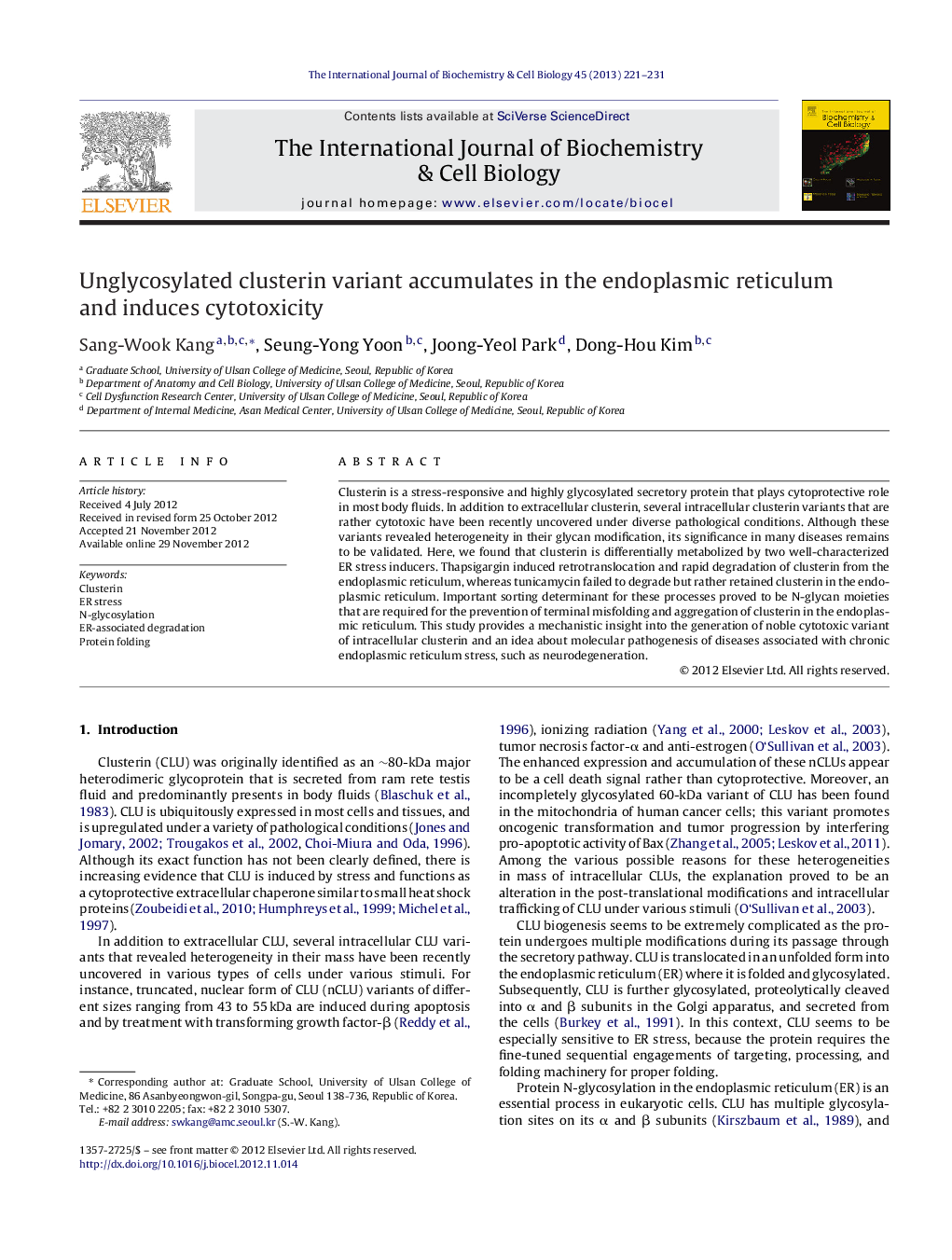| Article ID | Journal | Published Year | Pages | File Type |
|---|---|---|---|---|
| 8324322 | The International Journal of Biochemistry & Cell Biology | 2013 | 11 Pages |
Abstract
Clusterin is a stress-responsive and highly glycosylated secretory protein that plays cytoprotective role in most body fluids. In addition to extracellular clusterin, several intracellular clusterin variants that are rather cytotoxic have been recently uncovered under diverse pathological conditions. Although these variants revealed heterogeneity in their glycan modification, its significance in many diseases remains to be validated. Here, we found that clusterin is differentially metabolized by two well-characterized ER stress inducers. Thapsigargin induced retrotranslocation and rapid degradation of clusterin from the endoplasmic reticulum, whereas tunicamycin failed to degrade but rather retained clusterin in the endoplasmic reticulum. Important sorting determinant for these processes proved to be N-glycan moieties that are required for the prevention of terminal misfolding and aggregation of clusterin in the endoplasmic reticulum. This study provides a mechanistic insight into the generation of noble cytotoxic variant of intracellular clusterin and an idea about molecular pathogenesis of diseases associated with chronic endoplasmic reticulum stress, such as neurodegeneration.
Related Topics
Life Sciences
Biochemistry, Genetics and Molecular Biology
Biochemistry
Authors
Sang-Wook Kang, Seung-Yong Yoon, Joong-Yeol Park, Dong-Hou Kim,
